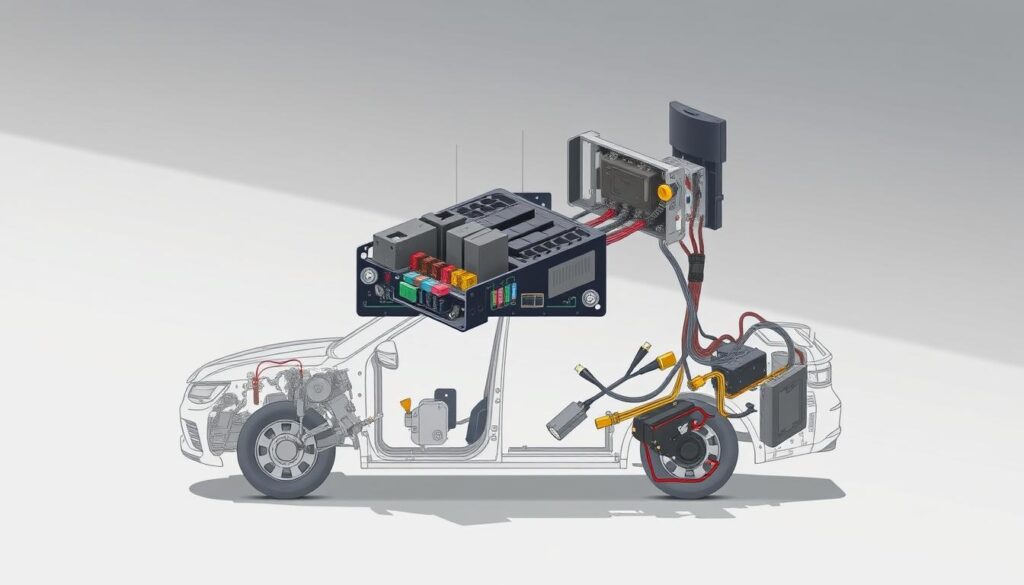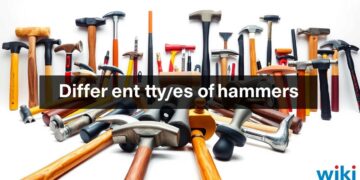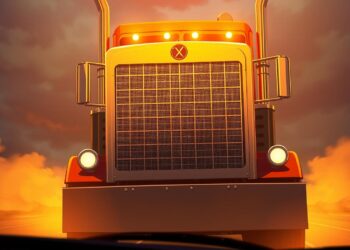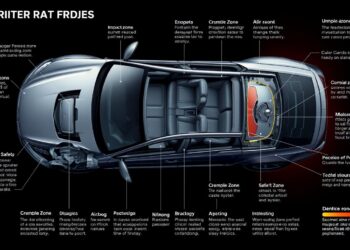Vehicle crashes vary in severity, but head-on collisions are the most dangerous. Data from 2025 safety reports shows these crashes often result in severe injuries or fatalities. This is because of the high-speed impacts involved.
Understanding collision types helps drivers stay alert and improve road safety. Modern safety systems, like advanced airbags and reinforced frames, are similar to how types of electrical panel boards protect homes. Just as electrical systems need regular upgrades, vehicle safety depends on technology and driver awareness.
This guide ranks the deadliest crash types. It is backed by 2025 statistical trends and expert analysis.
Key Takeaways
- Head-on collisions lead to higher fatality rates than other crash types.
- 2025 safety guides highlight driver behavior as a key factor in collision prevention.
- Vehicle safety tech advancements parallel improvements in types of electrical panel boards for infrastructure resilience.
- Road design and maintenance play critical roles in reducing crash risks.
- Annual safety updates, like those for electrical systems, improve overall accident survival rates.
Understanding Vehicle Collisions
Vehicle collisions happen when drivers, cars, and roads meet in a bad way. Just like keeping electrical panels safe at home, checking cars often helps avoid accidents. Looking at brakes, tires, and lights regularly can stop many crashes.
Definition of a Vehicle Collision
A vehicle collision is when cars, objects, or people crash together. These crashes can be small or very serious. Keeping cars in good shape, like electrical panels, helps keep everyone safe.
Common Causes of Collisions
- Speeding or reckless driving
- Ignoring traffic signals or signs
- Vehicle malfunctions (brake failure, tire blowouts)
Nearly 25% of crashes are caused by car problems that could be fixed, says NHTSA. Just like checking electrical panels keeps homes safe, regular car checks prevent accidents.
Importance of Collision Awareness
“Prevention starts with knowledge,” says AAA safety experts. “Ignoring warning signs in vehicles or home systems like electrical panel types leads to avoidable dangers.”
Knowing about dangers helps prevent them. Drivers should check their cars, just like homeowners check electrical panels. Learning and teaching others can make roads safer for everyone.
The Danger of Head-On Collisions
Head-on collisions are rare but very dangerous. They cause over 10% of traffic deaths every year. Safety tech, like driver assistance systems, works like circuit breakers. They prevent disasters by detecting problems early.
Frequency of Head-On Collisions
NHTSA data shows head-on crashes are 2% of all accidents but 10% of traffic deaths. Most happen on rural roads. This is because there are fewer barriers and speeds are higher.
Impact on Drivers and Passengers
Crashes at 40 mph are as dangerous as a 30-foot fall. People often get brain injuries, spinal fractures, and internal bleeding. Yet, wearing seatbelts can cut fatalities by 45%.
Safety Statistics
- Head-on collisions have a 50% fatality rate vs. 20% in rear-end crashes
- Cars with automatic emergency braking systems cut these collisions by 40%
- States with mandatory airbag laws see 25% fewer injuries in head-on crashes
New safety tech is like the progress in electrical systems. Just as circuit breakers prevent overloads, vehicle sensors detect dangers before crashes happen.
Rear-End Collisions: The Silent Hazard
Rear-end crashes are often overlooked, yet they make up nearly 29% of all accidents. Like old residential electrical panel types, bad brakes or ignored car parts can lead to big problems. Keeping things in good shape stops accidents and electrical issues at home.
Common Scenarios for Rear-End Accidents
- Following too closely in stop-and-go traffic
- Driver distraction from phones or navigation systems
- Slippery roads reducing stopping distance
Potential Injuries
Even at 20 mph, rear impacts can cause serious harm. This includes whiplash, back strains, and spinal injuries. Airbags help, but bad seat settings can make things worse.
Prevention Tips
- Keep a 3-second following distance in clear conditions
- Install dash cameras to document incidents
- Replace worn brake pads annually—like updating outdated residential electrical panel types, proactive repairs prevent failures
Home safety guides say to check electrical systems often. Car maintenance logs should track brake and tire checks to lower rear-end crash risks.
Side-Impact Collisions: The T-Bone Effect
Side-impact crashes happen at intersections and hit a car’s side hard. These crashes, known as T-bone collisions, can cause serious injuries. This is because cars have less room to crumple on their sides. Safety features try to lessen these risks, just like how commercial electrical panel boards are designed.
Overview of Side-Impact Collisions
When a car hits another on its side, it doesn’t have the front-end protection of head-on crashes. This makes it hard to keep people safe inside. Side crashes are a big problem, causing nearly 20% of all traffic deaths every year.
Vulnerable Vehicle Areas
There are a few weak spots in a car:
- Door panels and B-pillars
- Side windows and where people sit
- Fuel lines and electrical systems
Car makers use strong steel and materials that absorb energy to protect these areas.
Safety Features
Modern cars use ideas from commercial electrical panel boards. These ideas help them stay safe and work well under stress. Some new features include:
- Side-curtain airbags that pop out fast
- Strong door beams that take more impact
- Smart sensors that stop the car quickly
These features spread out the force, just like how electrical panels manage power. They focus on keeping everyone safe and the car strong.
“Side-impact safety requires a layered defense system, much like the compartmentalized design of commercial electrical panel boards.”
Rollover Accidents: A Hidden Threat
Rollover accidents are very dangerous and not well understood. They happen when cars tip over, leading to serious injuries. Making sure cars have good main types of electrical panels can help. Keeping cars in good shape and choosing the right parts is key.

Causes of Rollover Accidents
Rollovers often happen because of:
- Driving too fast in turns or on curves
- Putting too much weight in the car
- Car instability from uneven weight
Stats on Rollover Incidents
NHTSA reports show:
- Rollovers cause 33% of car deaths
- SUVs and trucks roll over three times more than cars
- Most rollovers are due to driver mistakes, not car problems
Safety Measures to Prevent Rollovers
To stop rollovers, do:
- Check tire pressure and alignment
- Avoid sudden turns
- Use main types of electrical panels for stability control
Modern safety tech, like electronic stability control, needs strong electrical systems. The right main types of electrical panels help these systems work well. Taking these steps can save lives and make crashes less severe.
Single-Vehicle Crashes: Sometimes It’s Just You
Single-vehicle crashes often happen because of driver mistakes or outside factors. Fixing these issues is like solving problems with popular types of breaker panels. We need a clear plan to avoid harm and legal trouble.
Causes of Single-Vehicle Accidents
- Speeding or reckless maneuvers
- Distractions like phone use or fatigue
- Vehicle malfunctions (brake failure, tire issues)
- Weather or road hazards (ice, potholes)
Consequences of Missing Obstacles
Ignoring dangers can lead to losing control. Injuries can be from small cuts to serious spinal damage. Damage to property might be expensive to fix. If someone is found to be careless, they could face legal problems.
What to Do After a Single-Vehicle Crash
- Ensure safety: Turn on hazards and exit the vehicle if possible
- Contact emergency services immediately
- Document the scene with photos and witness statements
- Report the incident to insurance within 24 hours
Handling a crash is like fixing popular types of breaker panels—stay calm. Keep everyone safe and follow the right steps to reduce risks.
Multi-Vehicle Pile-Ups: Chaos on the Road
Multi-vehicle pile-ups happen when many cars crash in a row. This usually happens in bad weather or heavy traffic. These accidents block highways, stress emergency teams, and cause legal problems. Knowing why they happen helps us avoid them.
Definition and Common Causes
Pile-ups often happen on highways during heavy traffic or bad weather. The main reasons include:
- Slippery roads from rain or ice
- Braking failures or sudden stops
- Distracted driving at high speeds
Impact on Traffic and Emergency Response
“Pile-ups can paralyze major routes for hours, delaying critical rescue efforts.”
Teams struggle to clear the wreckage, leading to more accidents. The crowded roads make it hard for victims and responders.
Legal Considerations
Figuring out who’s at fault involves looking at driver actions, car maintenance, and road design. Lawsuits check if drivers were speeding, following too close, or if safety systems failed. Just like how factories use safety panels, we need good traffic laws and roads to prevent these accidents.
Good planning is like investing in safety systems. It helps us avoid these disasters instead of just reacting to them.
The Role of Distracted Driving in Collisions
Distracted driving makes driving more dangerous. It leads to more serious crashes. This part explains how distractions cause accidents and how to stay safe.
Types of Distractions
- Visual: Looking away from the road, like reading texts or adjusting GPS.
- Manual: Not using hands on the wheel, such as eating or reaching for things.
- Cognitive: Thinking about something else, like daydreaming or talking deeply.
Statistics on Distracted Driving Accidents
The NHTSA says 8% of U.S. crash deaths are from distracted driving. In 2023, over 3,000 people died from phone distractions. Texting makes crashes 23 times more likely, studies show.
Tips to Minimize Distractions
- Turn off phone notifications; use “Do Not Disturb While Driving”.
- Plan your GPS route before driving and avoid changing it while driving.
- Keep snacks and essentials close to avoid reaching.
Following electrical safety rules helps here too. Always keep your focus on the road.
Road Conditions and Their Impact on Collisions
Road conditions greatly affect the risk of accidents. Slippery roads, poor visibility, and old car parts can make driving risky. Knowing these risks helps drivers stay safe.
Weather-Related Hazards
Bad weather increases the chance of accidents. Main dangers include:
- Rain: It makes roads slippery and hard to see.
- Ice: It causes cars to lose control quickly.
- Fog: It makes it hard to see, leading to slow reactions.
Importance of Vehicle Maintenance
Regular checks can prevent car troubles. Good tires, working brakes, and lights are key. For example, bad tires can make stopping much harder, says the NHTSA.
Just like how ignoring HVAC filters can cause problems, ignoring car maintenance can lead to accidents. Both need regular care.
Safe Driving Practices in Poor Conditions
Change how you drive when it gets worse:
- Slow down on slippery roads.
- Keep a 6-second gap in rain or snow.
- Use low-beam headlights in fog to see better without glare.
Pro tip: Always check the weather forecast before driving. Also, use apps to keep an eye on your car’s tire pressure.
Conclusion: How to Stay Safe on the Road
Knowing risks and taking action is key to road safety. Head-on, rear-end, and side-impact crashes are the most dangerous. By understanding these, drivers can avoid mistakes and keep everyone safe.
Key Takeaways on Collision Types
Head-on crashes are the deadliest because of the high-speed impact. Rear-end crashes often happen when someone follows too close. T-bone accidents hit the car’s side, which is very dangerous.
Rollovers and single-vehicle crashes show how important it is to drive carefully. Knowing these risks helps drivers stay safe.
Importance of Defensive Driving
Defensive driving means always being alert and ready for dangers. Keep a safe distance from other cars and follow speed limits. Always use your turn signals.
Features like automatic emergency braking and lane-keep assist are lifesavers. Make sure your tires are properly inflated and your headlights work well. This keeps your car reliable.
Resources for Further Safety Information
Check out the National Highway Traffic Safety Administration (NHTSA) for crash test ratings and recall info. The Insurance Institute for Highway Safety (IIHS) offers research on safety systems. Look at your car’s manual for maintenance tips.
Keeping up with maintenance ensures your car’s safety features work right. Learning and being ready can greatly reduce accident risks.



















